
Reading Time: 9 minutes
Welcome to “Boat Shipping Made Easy: A Step-by-Step Guide,” your essential resource for seamless car and boat transport. Are you planning to move your boat to a new destination? Perhaps you’re a first-time vessel owner uncertain about the transport for marine vessels?
Fear not! Nationwide Auto Transportation (NAT) is here to simplify your journey with proven methods and reliable services. In this guide, we’ll delve into the specifics of boat and car transport. Consequently, focusing on open transport, enclosed transport, and roll-on/roll-off (RoRo) shipping – NAT’s specialties.
We’ll also cover crucial aspects like distance considerations, boat specifications, and additional services, ensuring you’re well-equipped to make informed decisions. Plus, we’ll highlight the importance of insurance, liability, and choosing the right shipping company, tailored to your needs and budget. With that, let’s set sail – boat shipping made easy!
Understanding Boat Transport

Boat shipping is an important part of the maritime industry, allowing owners to transport their vessels from one location to another. Whether you’re moving to a new home, selling your boat to someone in a different country, or attending a boat show in a different state, boat shipping provides a convenient and efficient way to transport your vessel safely. In this section, we will explore what car and boat shipping is, the different types of shipping, and the importance of it.
What is Boat Shipping?
Boat shipping, also known as yacht shipping or boat transport, is the process of moving a boat from one location to another using specialized vessels, such as cargo ships or specialized carriers. This process involves meticulous planning, coordination, and expertise to ensure the safe and secure transportation of boats of various sizes and types.
Types of Boat Shipping
There are different types of shipping methods available, depending on the size of the boat, distance of transportation, and your specific needs. Some common types include:
- Container: This method involves loading the boat into a shipping container, securing it to prevent damage during transportation.
- Ro-Ro: Roll-on/Roll-off involves loading onto a specially designed carrier that allows it to roll on and off the vessel.
- Lift-On/Lift-Off: This method involves lifting the boat using cranes and placing it onto the carrier vessel for transportation.
- Flat Rack: In this method, the boat is placed on a flat rack container, which is then loaded onto the carrier vessel.
- Float-On/Float-Off: Suitable for smaller boats, this method involves floating the boat onto the vessel for transportation.
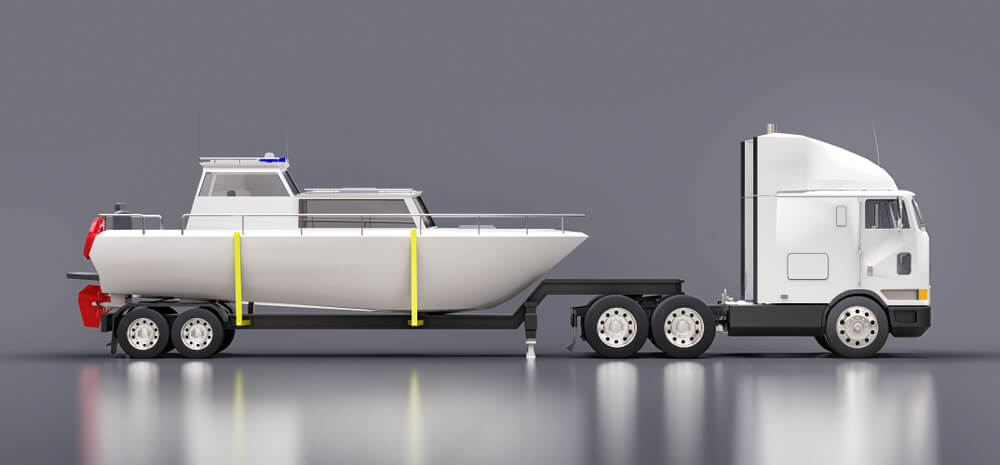
Importance of Boat Shipping
Car and Boat Transport plays a crucial role in various scenarios, offering several benefits to boat owners:
- Convenience: Boat shipping allows you to transport your boat to different locations without the need for long-distance cruising or navigating through challenging waters.
- Accessibility: With boat shipping, you can explore new and distant waterways without worrying about the logistics of getting your boat there.
- Safety: By using professional boat shipping services, you can ensure that your boat is handled with care and expertise, minimizing the risk of damage during transportation.
- Time-saving: Boat shipping saves you valuable time by transporting your boat efficiently, allowing you to focus on other aspects of your boating adventure.
- Global Reach: Enables international boat trade and allows enthusiasts to purchase vessels from different parts of the world, expanding their options.
Next, we will explore the market trends in boat shipping, providing insights into the growth of the industry and its impact on the global maritime market.
Market Trends in Boat Shipping

This is a booming industry that continues to see significant growth and development. As more people invest for recreational purposes or for business ventures, the demand for boat shipping services has also increased. In this section, we will explore some of the market trends and the factors driving this growth.
Explore global shipping trends at the International Maritime Organization.
Global Boat and Car Transport Market Growth
Car and Boat Transport: The global market is experiencing steady growth, with a projected market value of $123.75 billion by 2023, reaching $159.23 billion by 2028. This growth can be attributed to various factors, including:
- Increasing leisure activities: As more individuals seek recreational activities, the demand for boats and ships for personal use, such as fishing, cruising, and water sports, has risen significantly.
- Rising tourism: The tourism industry heavily relies on boats and ships to transport tourists for cruises, island hopping, and other water-based activities. With the growth of the tourism industry in various regions, the demand for boat transportation has seen a substantial increase.
- Boat manufacturing: The boat manufacturing industry continues to expand, with new models and designs being introduced regularly. This growth in boat production directly contributes to the demand for services.
- International trade: Maritime vessels play a crucial role in international trade, accounting for 40% of the U.S. international trade value and 70% of trade weight. As global trade continues to grow, the demand for Boat and Car transport services to transport goods and materials across the seas also increases.
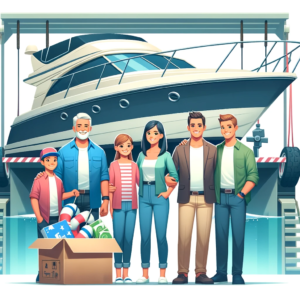
Rise in US Boat Sales
The United States is one of the largest markets for boats and ship sales, and it has experienced a significant increase in boat sales in recent years. In 2021 alone, boat sales in the United States increased by 9%. Some factors contributing to this rise in boat sales include:
- Strong economy: A robust economy provides individuals with the financial means to invest in recreational activities, such as buying boats.
- Outdoor leisure focus: The COVID-19 pandemic has shifted people’s focus towards outdoor activities and leisure. This shift has led to an increased interest in boating as a safe and enjoyable outdoor activity.
- Low interest rates: Favorable interest rates make it more affordable for individuals to finance boat purchases, encouraging more people to invest in boats.
Anticipated Growth of the European Vessel Fleet
The European vessel fleet is also expected to see significant growth in the coming years, reaching 2.3 million units by 2026. This growth can be attributed to several factors:
- Increasing maritime tourism: Europe is a popular destination for maritime tourism, with countries like Greece, Italy, and Croatia attracting a large number of tourists for sailing vacations and cruises.
- Growing boating industry: The boating industry in Europe is expanding, with increased interest in recreational boating and water sports.
- Renewable energy projects: Europe has been investing in renewable energy projects, such as offshore wind farms. These projects require transportation and support vessels, driving the growth of the vessel fleet.
The market trends in indicate a thriving industry with opportunities for both shipping companies and boat owners. As the demand continues to rise, it is important to stay up-to-date with these trends and adapt to the evolving needs of the market.
Car and Boat Transport Process
Car and Boat Transport can seem like a complicated process, but with the right information and preparation, it can be a smooth and hassle-free experience. Whether you’re moving your boat to a new location or selling it to someone in a different part of the country, following these steps will help ensure a successful process:
1. Choosing a Shipping Company
Always choose a reputable and experienced transport company. Look for a company that specializes in boat transportation and has a proven track record of delivering boats safely and on time. Consider factors such as the company’s insurance coverage, licensing, and customer reviews before making a decision.
2. Preparing Your Vessel for Shipping
Properly preparation is crucial to avoid any damage during transit. Here are some steps to follow:

- Clean your boat thoroughly, both inside and out, to remove any dirt, debris, or marine growth.
- Remove all personal belongings and valuables from the boat.
- Secure any loose items, such as sails, covers, or electronics, to prevent them from shifting during transport.
- Drain all water from the boat, including the bilge, water tanks, and plumbing systems.
- Disconnect and remove the boat’s battery and secure it in a safe location.
3. Understanding Shipping Costs
Boat shipping costs can vary depending on several factors, including the size of your boat, the distance it needs to be transported, and any special requirements or services you may need. It’s important to obtain quotes from multiple shipping companies to compare prices and services. Be sure to ask about any additional fees or surcharges that may apply.
4. The Role of Insurance in Boat Shipping
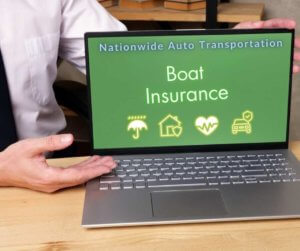
Insurance is an essential aspect of boat shipping that provides financial protection in case of any unforeseen events or damage during transit. Before shipping your boat, make sure you have adequate insurance coverage in place. You can either purchase insurance through the shipping company or through your own marine insurance provider. Read the terms and conditions of the insurance policy carefully to understand what is covered and any potential exclusions.
For detailed information on maritime insurance, visit U.S. Maritime Administration.
Discover essential tips for smooth vehicle shipping in our comprehensive guide. Learn how to choose the right shipping company, prepare your vehicle, and navigate customs with ease. Visit our Smooth Vehicle Shipping post for expert advice and ensure your vehicle’s safe and timely delivery.
5. Unloading and Inspection Upon Arrival
Once your boat reaches its destination, it’s important to handle the unloading process with care. Work with the shipping company to coordinate a convenient time and location for unloading. Upon arrival, carefully inspect your boat for any signs of damage or issues. If you notice any problems, document them with photographs and notify the shipping company immediately. It’s also a good idea to have a checklist of items to inspect, including the boat’s hull, engine, electronics, and interior.
Remember, each boat shipping process may vary slightly depending on your specific circumstances and the shipping company you choose. By following these general steps, you can ensure a smoother and safer boat shipping experience.
Tip: Communication is key throughout the boat shipping process. Stay in touch with the shipping company and ask any questions or address any concerns you may have. Keeping a clear line of communication will help ensure a successful shipping experience.
Learn about environmental considerations in shipping from the Environmental Protection Agency.
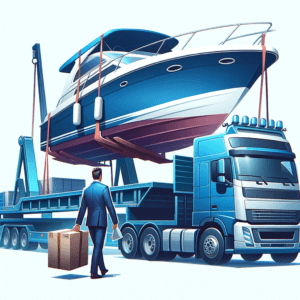
Boat Shipping Made Easy | Quick Tips for Success
- Choose a Reputable Shipping Company
- Research companies specializing in boat transport.
- Check for experience, reviews, licensing, and insurance.
- Prepare Your Boat
- Clean and remove personal items.
- Secure loose parts like hatches, doors, windows.
- Drain fuel and water tanks.
- Disconnect batteries.
- Understand Shipping Costs
- Consider transportation fees, insurance, permits, duties.
- Get detailed quotes; inquire about hidden fees.
- Insurance Considerations
- Opt for additional insurance coverage.
- Unloading and Inspection
- Be present during unloading and inspection.
- Document any damages or issues.
Tip: Create a checklist for all tasks in the boat shipping process.
Car and Boat Transport Wrapped Up
In wrapping up, remember that boat shipping doesn’t have to be overwhelming. With informed preparation and the right partners, it transforms into a straightforward and secure process. Key steps include:
- Select a trusted boat shipping company with a strong track record.
- Prepare your boat meticulously, ensuring cleanliness and security of all components.
- Be aware of the factors influencing shipping costs, like distance and boat size.
- Don’t overlook the value of comprehensive insurance for peace of mind during transit.
- Upon arrival, diligently inspect your boat, noting any discrepancies.
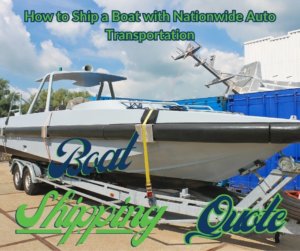
For a seamless and dependable boat shipping service, consider Nationwide Auto Transportation. Renowned for their expert nationwide vehicle shipping, including boats, they’re a top choice for ensuring your boat’s safe and punctual arrival.
Ready to ship your boat effortlessly? Explore Nationwide Auto Transportation’s boat shipping services. Their commitment to excellence and customer satisfaction makes the journey smooth and worry-free. Contact them today for a personalized quote and sail smoothly into your next aquatic adventure.
Act now and ensure your boat’s journey is in the best hands with Nationwide Auto Transportation!
Explore our range of specialized transportation services, each tailored to meet your unique needs. From classic cars to boats, we ensure safe, reliable, and efficient transport nationwide:
- Car Shipping: Trust us for secure transport of your vehicle, whether across the state or the country.
- Enclosed Auto Transport: Offering extra protection for your high-value and classic cars.
- Motorcycle Shipping: Specialized care for shipping your motorcycle safely.
- RV Shipping: Expert solutions for moving your home-on-wheels.
- Boat Shipping: Professional and careful transportation of your watercraft.
Click on each service to learn more about how we can help you.
Nationwide Auto Transportation provides reliable boat shipping services across the US. Get in touch with them today for a quote and make your boat shipping journey a breeze!
Frequently Asked Questions | Car and Boat Transport
- How much does it cost to ship a boat?
The cost of shipping a boat can vary depending on factors such as the size and weight of the boat, the distance it needs to be shipped, the shipping method chosen, and any additional services required. It is best to contact a boat shipping company for an accurate quote.
- What are the different methods of boat shipping?
There are several methods of boat shipping, including roll-on/roll-off (RO-RO) shipping, flat rack shipping, container shipping, and overland trucking. The best method will depend on the type and size of the boat, as well as the destination.
- Do I need to prepare my boat for shipping?
Yes, it is important to properly prepare your boat for shipping. This includes cleaning and removing any personal belongings, securing loose items, draining fuel and water tanks, disconnecting batteries, and ensuring the boat is adequately protected and wrapped.
- How long does it take to ship a boat?
The time it takes to ship a boat will depend on various factors, such as the distance it needs to be transported, the shipping method chosen, and any potential delays. It is best to consult with the shipping company to get an estimated timeline.
- Is boat shipping insured?
Yes, reputable boat shipping companies typically offer insurance coverage for transported boats. It is important to verify the insurance coverage and terms with the shipping company before booking the shipment.



